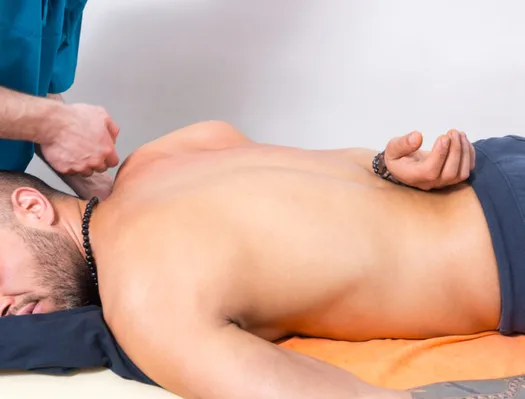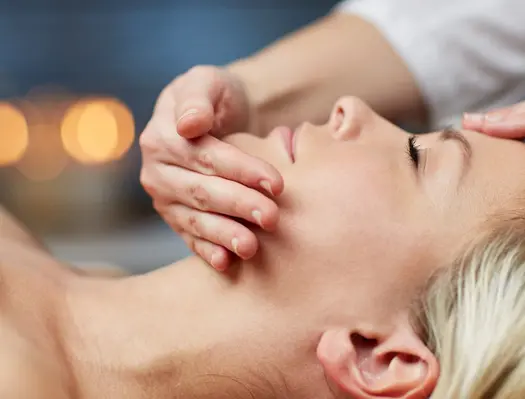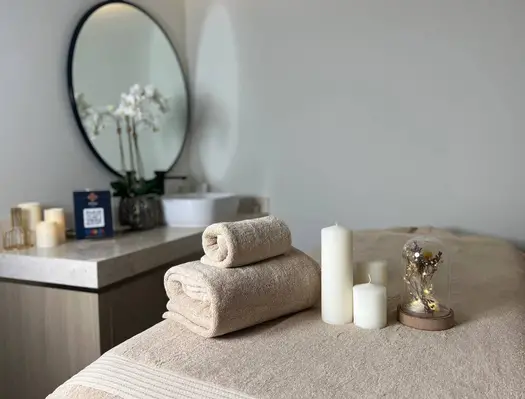Studies have shown important physical, mental and emotional benefits from massage therapy. With unlimited budget and time, why wouldn’t we indulge in regular massage sessions? Which begs the question, do we need regular sessions or is one enough? One of the best things about massage is that we feel better immediately. Regardless of the type of massage, relaxing, rejuvenating, or stimulating, our needs are met in the first session. However, to continue to reduce tension build-up, or to aid recovery from an injury, a course of massage therapy may be just what your body needs.
But how do you know how many sessions are required for sustained well-being? Well, it depends on your condition and goals. While there are no set rules, massages for injuries are typically more frequent than massage for relaxation. Likewise, massage to help with chronic pain or chronic conditions have a cumulative effect and need to be regular for optimum results. Whilst a massage for relaxation could be an irregular event. Together with your therapist, you’ll have the opportunity at your first session to discuss treatment goals and optimum frequency.
General Benefits of Massage Therapy
Why Does Massage Feel Good and How Does it Help Our Bodies?
In simple terms, massage provides muscle relaxation and stress relief. It helps improve circulation, facilitates healing after an injury and can boost sports performance. The benefits are different depending on your needs and stage of therapy. A trained therapist will always have a client’s goals in mind at the outset of a session.
Psychological Effects of Massage
There are few treatments that benefit both mind and body. Massage for stress can reduce anxiety, relax the body and mind, other types can help to heal injuries and relieve pain. We all face stress in our everyday lives and our bodies react by locking in tension. If you are looking to alleviate stress or anxiety, then sessions every two weeks would be hugely beneficial if the budget allows.
Endorphin Release
Massage is increasingly being used to treat depression, anxiety, chronic illnesses, recovery from surgery, and for pain and migraine relief. Research has shown that massage causes the body to release oxytocin which is known to create a sense of bonding. It releases endorphins, the feel-good hormone that we naturally release in times of joy or happiness. Endorphins are the body’s natural pain killer. Their legacy is longer than the actual massage session – creating an energy boost for 2 to 3 hours and a milder feel-good buzz for up to 24 hours. For people who can’t participate in physical exercise, massage therapy is a way to release this amazing feel-good hormone on a regular basis.
Massage Techniques
You may have given a friend or family member an amateur shoulder-rub and mimicked the techniques of a trained therapist without knowing the reasons for the movement or potential benefits. Here’s a brief guide to the most common techniques a trained massage therapist uses during treatments:

- The stroke technique is applied slowly and evenly to achieve a relaxation effect. To achieve a stimulating effect, the stroke technique is applied briskly.
- A rocking or shaking technique is used to create a movement around a joint and to shake soft tissue. The therapist will use this technique particularly carefully on a client who is prone to joint dislocation, inflammation, or other joint diseases, or if the client has compromised soft tissue around the joint.
- When a therapist makes a circular stroking movement with the palm of the hand, it’s known as the effleurage technique and the direction of movement is generally towards the heart. Deep effleurage pushes fluids through the body, increases blood through and lymph circulation.
- A kneading motion with compression and release is known as the petrissage technique. It is done in a rhythmical fashion and stretches the tissue layers relative to each other. Petrissage removes lactic acid accumulation, stimulates muscles, stretches and compresses muscle tissue, stimulates blood flow in the deeper veins and arteries and reduces scarring by breaking muscle and connective tissue adhesions. Massage compression increases the amount of blood in muscles.
- The friction technique targets deep tissue and is performed to stretch fibers. It is commonly used to reduce scar tissue formation after injury, to treat ligament and tendon injuries and to increase circulation or reduce cellulite. Tissues are manipulated using strong, sustained movements of the hand. The therapist will keep close, permanent contact with the skin and aims to avoid irritating rubs across the top of the skin. This technique uses fingers, palms, knuckles and even elbows. For more pressure, a therapist places one hand over the other. Strokes are usually performed in the direction of the muscle fibres and following the blood circulation. Friction benefits the body by increasing the flow of interstitial fluid (the fluid between blood vessels and cells) and increases the permeability of the capillary beds (the flow of blood plasma in and out of capillaries, which impacts upon the body’s inflammatory response).
- Tapotement is the technique of massage percussion. Often used to loosen mucus in the lungs for easier elimination. Heavy tapotement is not used over any bony prominence, the kidneys, abdomen or fragile tissue.
What are the benefits of getting massage therapy regularly?
The benefits of regular massage, as opposed to one-off sessions, include:
- the consistent unlocking of tension, allowing tension from stress to be disbursed before building up
- relief from postural stress
- reducing the build-up of scar tissue after injury
- improving circulation around injuries
- reduction of stress hormones cortisol and insulin
- stimulation of the lymphatic system which boosts the immune system
- increasing range of motion by consistently stretching muscles and easing tension in the adjoining tissues
- decreasing inflammation in the body and targeted joints
- improved blood flow and increases oxygen to tissues
- improved skin tone
- reduced anxiety and depression
- heightened mental alertness
- improved sleep
- improved posture
Massage can be preventative. By continuing a course of treatment, you may find that your health conditions are better controlled, chronic pain reduced and occurrences such as migraines become less frequent. Benefits of massage are cumulative and more effective when received regularly.
Studies have shown that reduction in stress increases longevity. Therefore, if regular massage reduces stress, it can be considered a tool to increase life expectancy.
Deep Tissue Massage
A deep tissue massage can feel like a vigorous work out for the body. It concentrates on the deep layers of muscles and fascia in the body.

Why would you have a deep tissue massage? It is used to alleviate certain muscular and skeletal conditions, including tension headaches and poor posture. It can help to release chronic muscle pain, reduce blood pressure, break scar tissue and provide relief from stress by reducing stress hormones, lowering the heart rate and boosting your mood with feel-good endorphins.
How often can you get a deep tissue massage?
A series of treatments is required to provide maximum benefit. Your therapist will recommend a schedule based on your condition, but every two weeks is typical of a treatment plan to rectify postural and skeletal conditions.
Lymphatic Drainage Massage
Lymphatic drainage is a gentle whole-body treatment that relaxes the body’s nervous system and aids the body’s immune system. The massage uses very light pressure and long, gentle, rhythmic strokes to increase the flow of lymph and reduce toxins in your body.
How often should you get a lymphatic drainage massage?
Manual lymph drainage, performed through massage by a trained therapist, or in a lighter way at home through body brushing, aids the flow and increases the efficiency of the lymph system. Results are short-term, so should be repeated regularly. Many therapists recommend an initial course of weekly massage for 6 weeks, followed by monthly treatments.
Full Body Massage
A full body massage will include head, shoulders, neck, back and all limbs right down to the fingers and toes. A therapist will often perform the head massage towards the end of a session when their client is already in a deeply relaxed state and prepared for the more subtle reflexology techniques of a head massage.
Therapists use a lubricant, often a diluted essential oil, when performing a full body massage. The result is a feeling of vitality, increased clarity of mind and glowing, hydrated skin.
There are no limits to how often you can schedule a full body massage. Undertaken on a weekly or monthly basis, a full body massage will help achieve your individual treatment goals.
Hot Stone Massage
Hot stone massage involves the application of warm stones on key acupressure parts of the body. This warming and relaxing of the muscles allow for deeper pressure to be applied.
Using massage oil and a combination of strokes and techniques, your therapist will begin with a traditional deep tissue massage before placing the stones and continuing with more pressure. The stones are heated in water until they reach 120-130 Fahrenheit. In contrast to hot stones, cold marble stones are sometimes used to aid in detoxification and healing.
Due to heat being applied directly to the skin, it is not recommended for people with high blood pressure, diabetes, heart disease, varicose veins, migraines, rheumatoid arthritis, decreased pain sensitivity, recent wounds, areas of weakened or inflamed skin, tumours, metal implants, recent chemotherapy, radiation, recent surgery or for people taking medication which thins the blood.
How often should you get a hot stone massage?
There is no official guidance for how often you should schedule a hot stone massage. Every two weeks to every month would be advised by most therapists.
Massage for Back or Neck Pain
Most of our daily activities can cause stress on the body. To reduce muscular tensions and join pain in these areas, we can apply pressure on the soft tissue around the neck, shoulders and back.
If you are experiencing back or neck pain, your therapist is likely to conduct an objective assessment of the soft tissue pain and dysfunction, looking at how it affects your movement and mobility.
How often you need massage for back or neck pain depends on the severity of the pain and if there is an underlying condition. Weekly sessions until pain relief and mobility improves followed by monthly sessions may be recommended.
Massage of the neck is best left to professionals as although rare, damage can occur if the head or neck is manipulated into a dangerous position.
Massage for Stress
Chronic or long-lasting stress can lead to serious illness, including depression and cardiovascular disease. It can cause headaches, migraines, muscle tension and anxiety. Fortunately, virtually every symptom of stress can benefit from massage. Research has shown that it can lower your heart rate and blood pressure, relax muscles and increase the production of endorphins, the body’s natural ‘feel good’ chemical. Serotonin and dopamine are also released through massage, and the result is a feeling of calm relaxation.
Massages most often used to treat stress include Deep Tissue, Shiatsu, Swedish and Therapeutic Massage. All these massages release tension from the body while decreasing our stress hormones, adrenaline and cortisol. The parts of the body your therapist is likely to concentrate on are the buttocks, wrists, thumbs, ears, diaphragm, shoulders and head.
How often you should have a massage to reduce stress depends of course on budget, time and lifestyle, but a massage every 2 weeks would be hugely beneficial in our modern, hectic lifestyles.
Prenatal Massage
Pregnant women should adopt a safety-first approach to massage during pregnancy and get advice from their doctor before embarking on a course of massage. It’s important to communicate your pregnancy status with your therapist and to seek out a therapist who has had specialist training in prenatal massage.
Massage during pregnancy should be relaxing and soothing and your therapist will know how to best position you, often offering additional support and cushioning to the body. A massage can help alleviate the normal discomforts of pregnancy, including back pain, stiff neck, leg cramps, nerve pain, headaches and edema/oedema (fluid build-up in the tissues).
Some therapists specialize in prenatal massage and have a special bed with space to accommodate a pregnant woman’s belly. If using a standard bed, your therapist will ask you to lie on your side for most of the massage.
Massage for Sport Activity
Every serious athlete understands the importance of regular self-care and body maintenance. Physio sessions and massage become a regular part of a professional athlete’s life. Sports massage is not just for elite athletes. Everyone participating in sport can benefit from a sports massage and the key is to know when to schedule one.
How often should you schedule a sports massage? As usual, that depends on your goals and any injuries being treated. A sports massage helps increase blood circulation, promotes muscle growth and encourages a fast recovery ensuring you are fit and ready to perform again as soon as possible.
A typical sports massage will begin with light compressions to warm up the muscles. The therapist will then use a combination of long gliding strokes, kneading, trigger point release, stretches and pulls. Afterwards, you’ll be given a self-care plan or recommend follow-up treatments.

When Massage Is Not Recommended
Massage therapy is one of the safest medical practices available and one of the most pleasurable. There are, however, conditions, injuries and circumstances which make massage inadvisable or unsafe.
During your initial assessment, your massage therapist will determine your condition by using history and observation to form a clinical impression. You will be informed of any risks, benefits, possible complications and contraindications.
At this point, if your therapist concludes that massage therapy is not the best course of action, you may be referred to your primary physician, or to other health care professionals. Examples of where this may occur include:
- where it is severe, unremitting pain
- severe pain with no history of injury
- central nervous system lesions or suspected central nervous system conditions
- range of motion of joints and muscles which the therapist feels may require further investigation
- suspected fractures or broken bones
- where skin rashes, cuts or infections are present
- where the person has a life-threatening illness
- during pregnancy in the first trimester
For some health conditions, certain massage techniques and treatments will be contraindicated and excluded from your treatment plan. For example, Hot Stone Therapy is not recommended for anyone suffering from high blood pressure, diabetes, heart disease, varicose veins, migraines, rheumatoid arthritis, decreased pain sensitivity, recent wounds, areas of weakened or inflamed skin, tumors, metal implants, recent chemotherapy, radiation or surgery or anyone on medication that thins the blood.
People suffering from chronic pain or from inflammatory disorders should ease into a massage treatment schedule very gently. Initially leaving long gaps between treatments to ensure that massage is helping rather than exacerbating underlying health issues.
What can you do to enhance the results of massage therapy?
- Arrive in good time for your appointment. Ten minutes early will allow you time to prepare
- Relax your limbs. Let go and allow your therapist to move them when they need to
- Maintain good breathing throughout the massage. It helps aid relaxation and accelerates the elimination process.
- Communicate with your therapist, let them know if something hurts or you require more treatment in the same spot. Ask for adjustments if you need them
- Stop thinking. Embrace the time you have to switch off and feel the massage. Be in the moment.
- Drink plenty of water after the massage. Massage sets your lymph in motion and water aids detoxification.
- Massage can lower blood sugar levels, so be aware to manage that if you are insulin-dependent.
- If possible, fit in a nap after a massage. It’s one of the best sleep you’ll have!
Budgeting time and money for massage is an investment in your health and demonstrates an ongoing commitment to a healthy future. There are few treatments that can deliver such a wealth of benefits to the mind and body in the space of an hour. With the right treatment plan, you could be on the road to a lifetime of self-care, relaxation, and inner calm.








